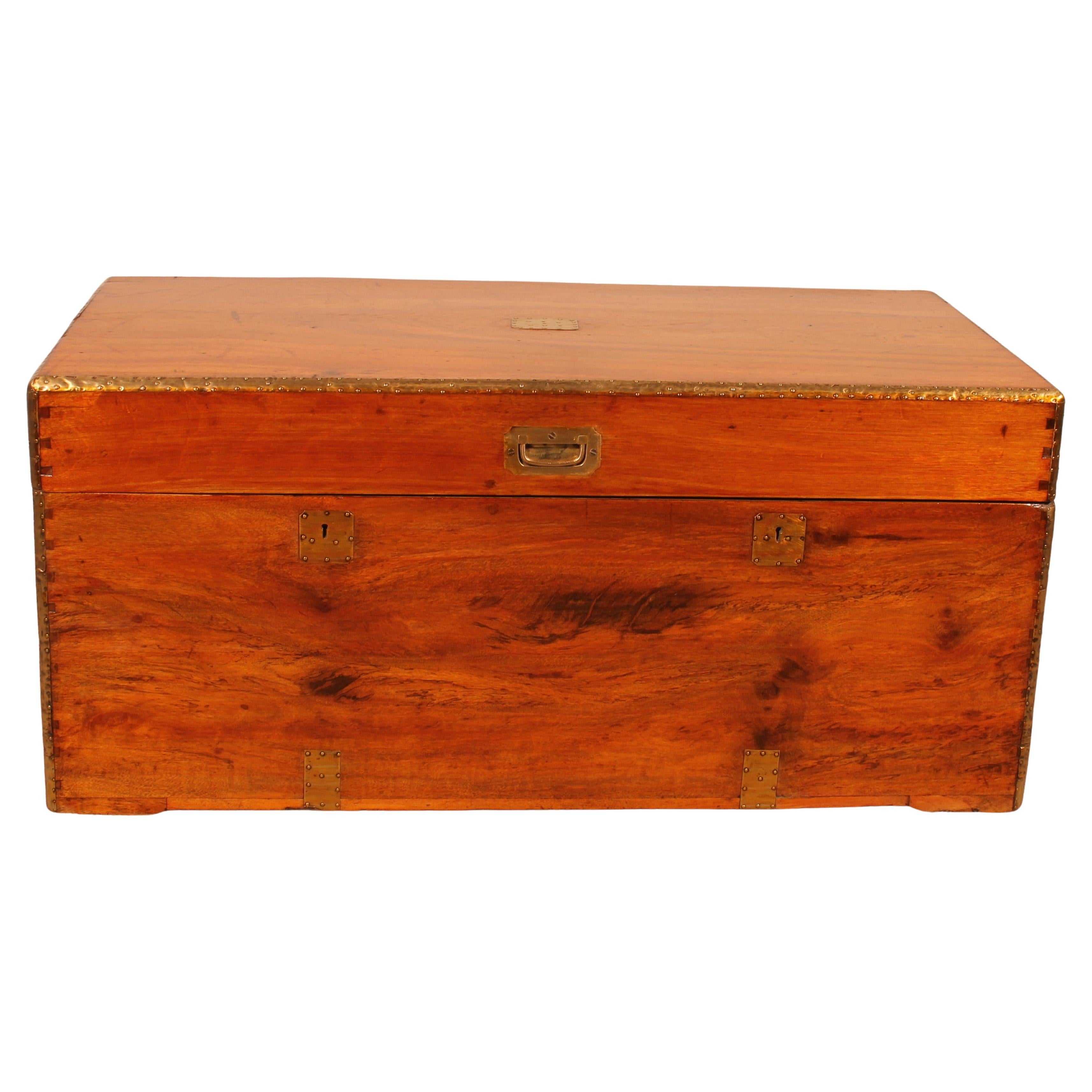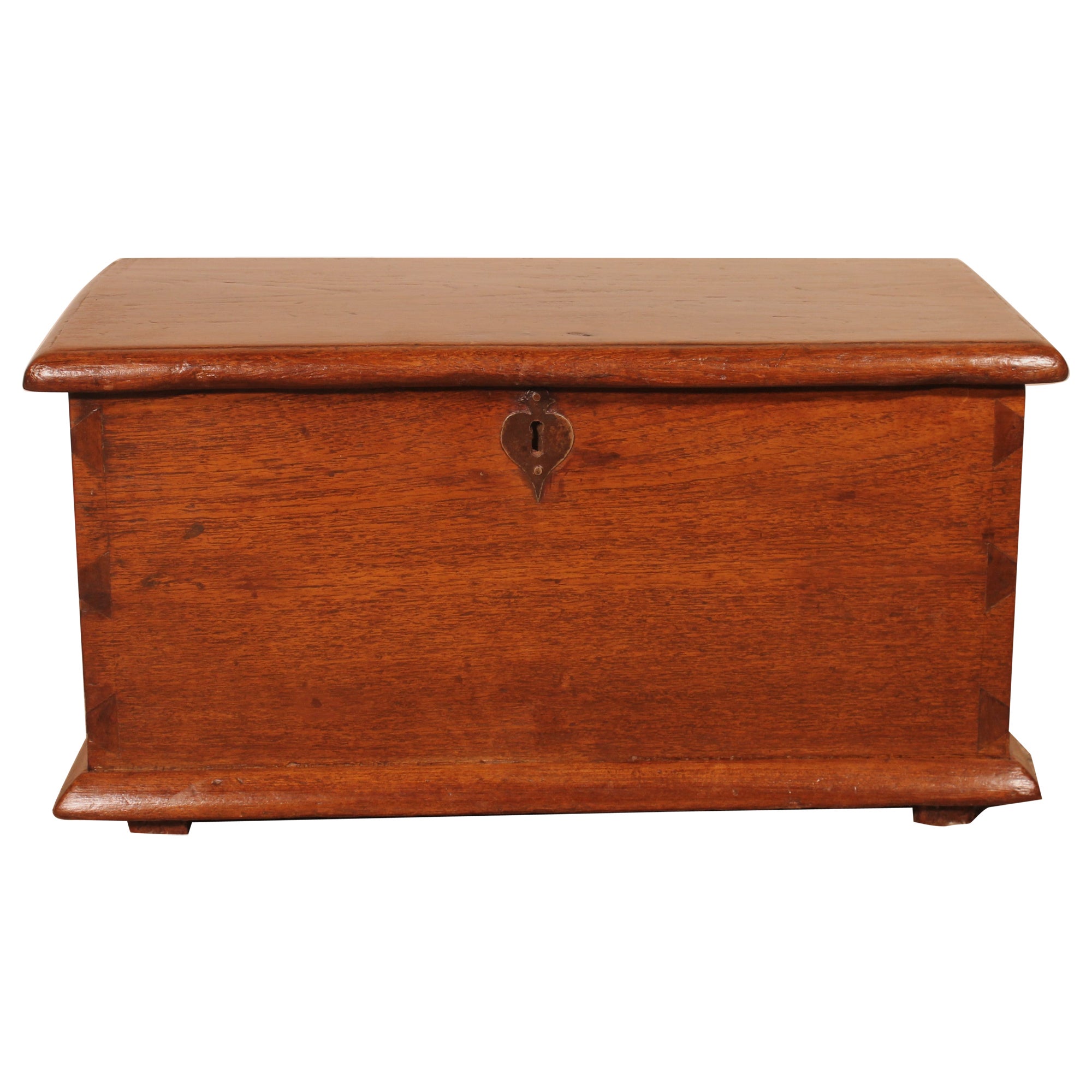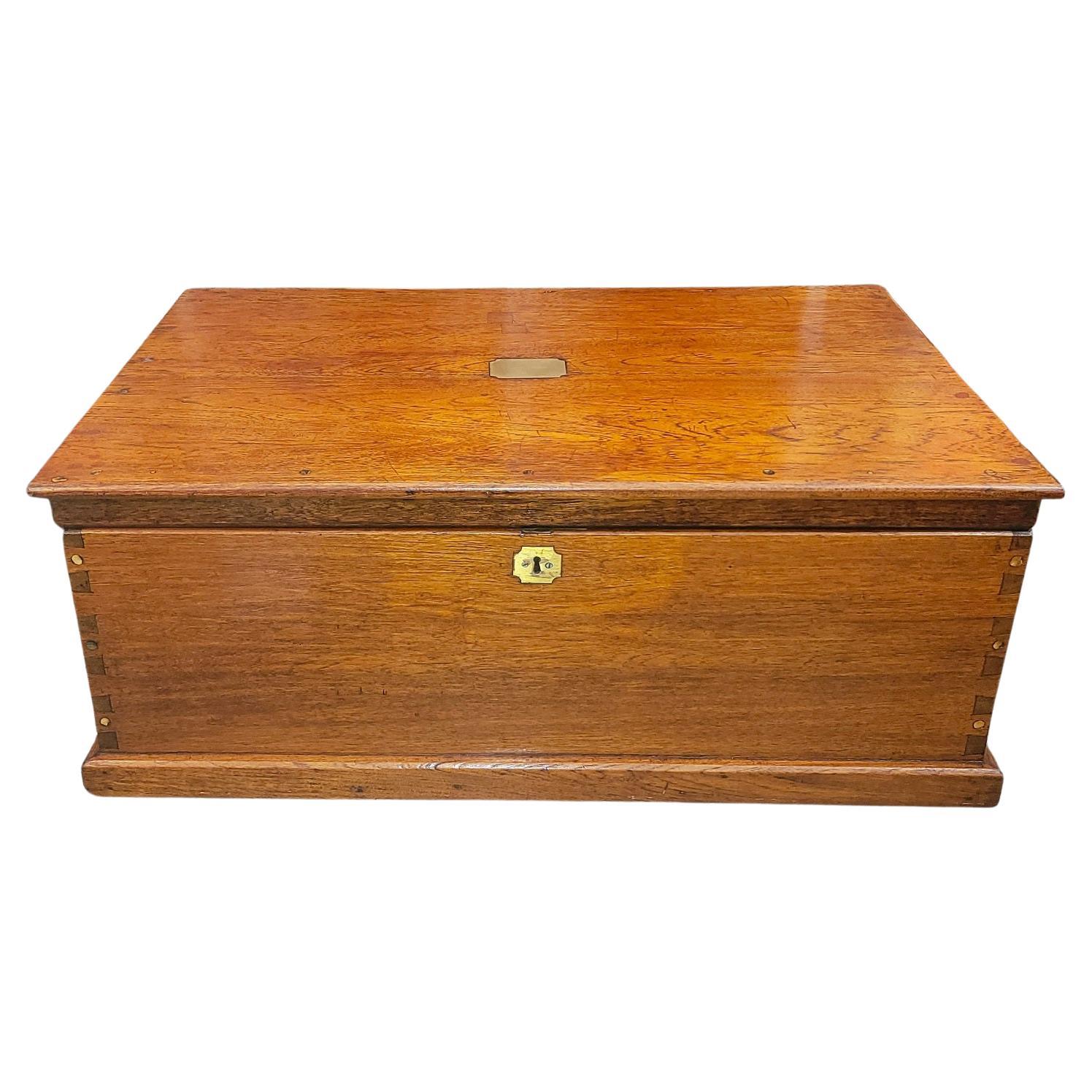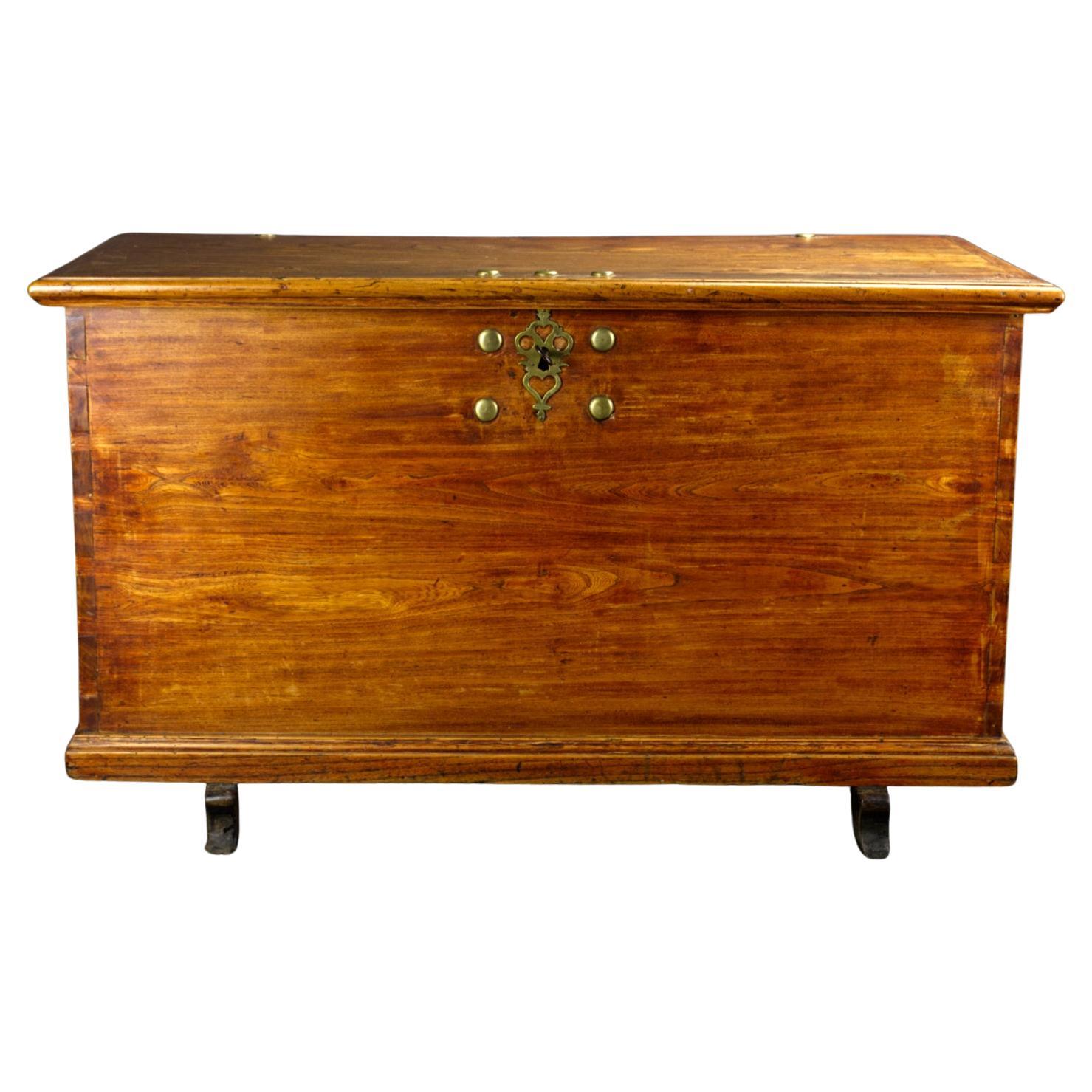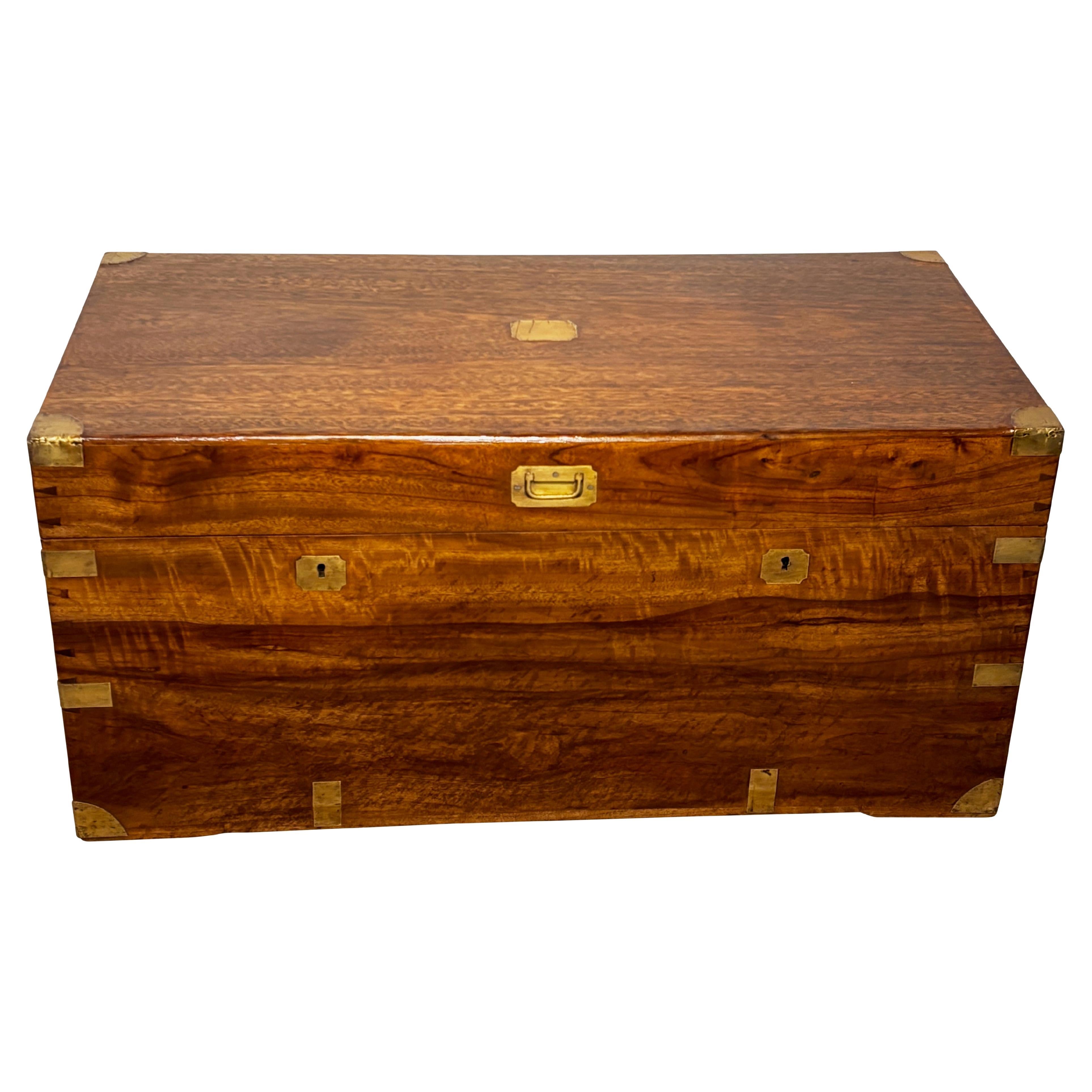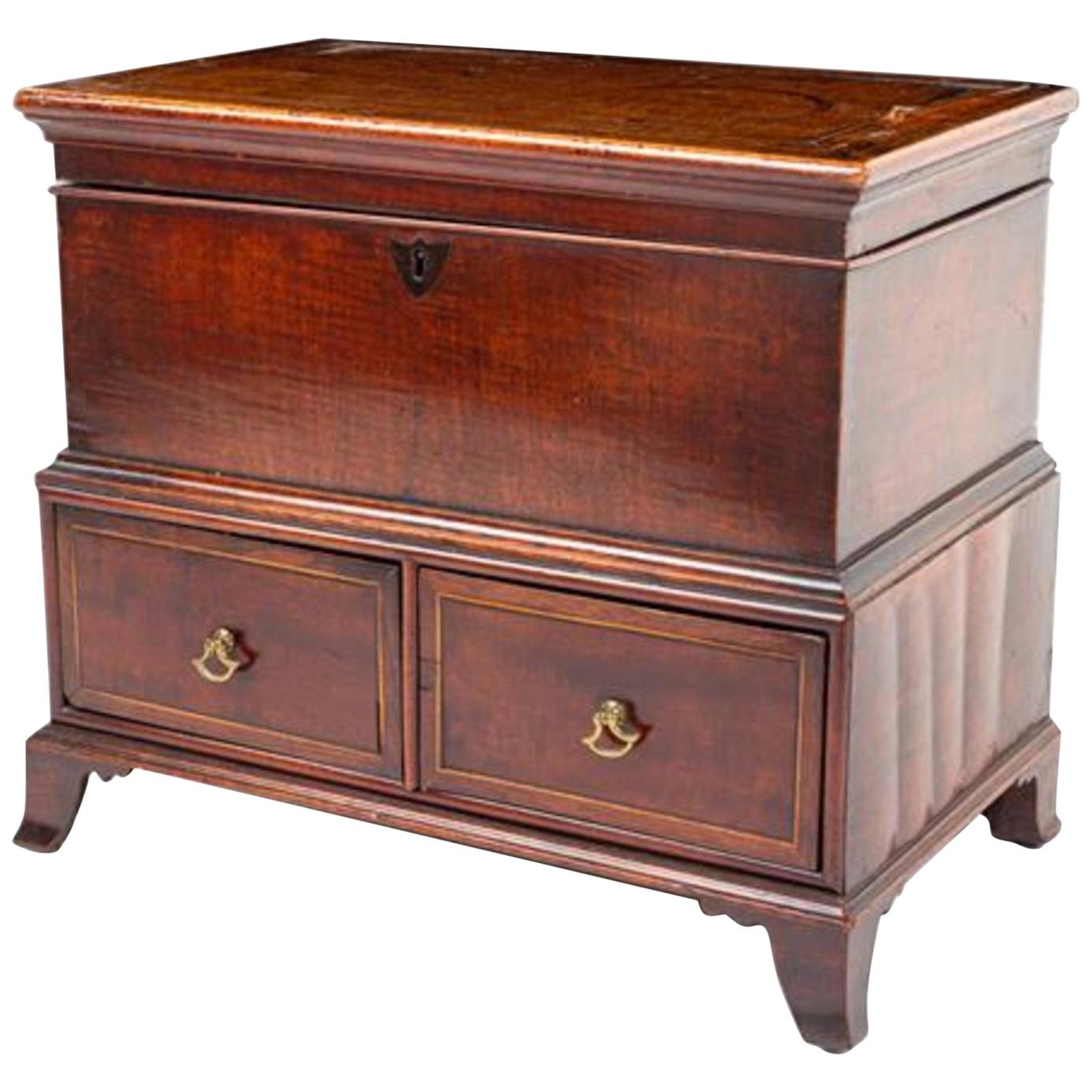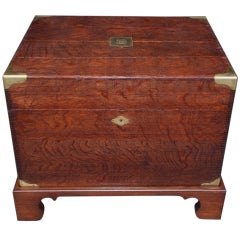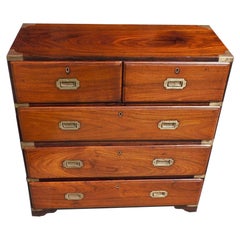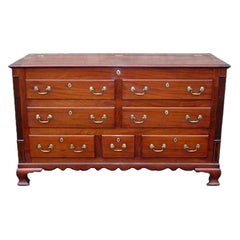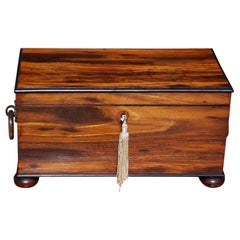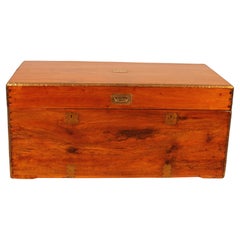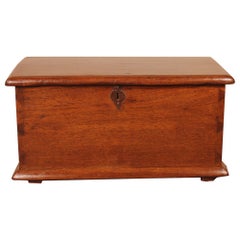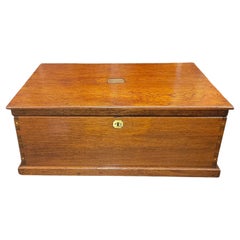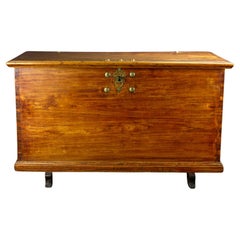Items Similar to English Camphor Wood Sea Captain's Chest with Braided Beckets, Circa 1770
Want more images or videos?
Request additional images or videos from the seller
1 of 10
English Camphor Wood Sea Captain's Chest with Braided Beckets, Circa 1770
$7,000
£5,315.27
€6,078.40
CA$9,780.02
A$10,877.51
CHF 5,679.90
MX$132,367.75
NOK 72,540.97
SEK 68,030.63
DKK 45,365.45
Shipping
Retrieving quote...The 1stDibs Promise:
Authenticity Guarantee,
Money-Back Guarantee,
24-Hour Cancellation
About the Item
English Camphor wood sea captain's chest with hinged top, exposed corner dovetailing, original mounted braided beckets, and terminating on the original rectangular molded edge base. Chest is finished on all sides & rope beckets are fabulous. Late 18th century
- Dimensions:Height: 17.5 in (44.45 cm)Width: 37 in (93.98 cm)Depth: 18.25 in (46.36 cm)
- Style:George III (Of the Period)
- Materials and Techniques:
- Place of Origin:
- Period:1770-1779
- Date of Manufacture:Circa 1770
- Condition:Wear consistent with age and use.
- Seller Location:Charleston, SC
- Reference Number:Seller: # 39581stDibs: LU88723391792
About the Seller
4.7
Vetted Professional Seller
Every seller passes strict standards for authenticity and reliability
Established in 1970
1stDibs seller since 2010
431 sales on 1stDibs
Typical response time: 6 hours
- ShippingRetrieving quote...Shipping from: Charleston, SC
- Return Policy
Authenticity Guarantee
In the unlikely event there’s an issue with an item’s authenticity, contact us within 1 year for a full refund. DetailsMoney-Back Guarantee
If your item is not as described, is damaged in transit, or does not arrive, contact us within 7 days for a full refund. Details24-Hour Cancellation
You have a 24-hour grace period in which to reconsider your purchase, with no questions asked.Vetted Professional Sellers
Our world-class sellers must adhere to strict standards for service and quality, maintaining the integrity of our listings.Price-Match Guarantee
If you find that a seller listed the same item for a lower price elsewhere, we’ll match it.Trusted Global Delivery
Our best-in-class carrier network provides specialized shipping options worldwide, including custom delivery.More From This Seller
View AllEnglish Oak Campaign Chest on Stand. Circa 1820
Located in Charleston, SC
English Oak campaign chest on stand with hinged top, original brass mounts and side handles, baise lined interior, and resting on stand with br...
Category
Antique 19th Century British Boxes
English Camphor Wood Military Campaign Chest with Recessed Brasses, C. 1820
Located in Charleston, SC
English camphor wood five-drawer military campaign chest with the original recessed brasses, key hole escutcheons, brass corner mounts, and terminating on the original bracket feet, ...
Category
Antique 1820s English Campaign Commodes and Chests of Drawers
Materials
Brass
English Mahogany Hinged Top Inlaid Mule Chest . Circa 1780
Located in Charleston, SC
English mahogany hinged top mule chest with carved molded edge, reeded sides, carved scalloped skirt, satinwood boxing inlay, original brasses, and terminating on original ogee bra...
Category
Antique 1780s English George III Commodes and Chests of Drawers
Materials
Brass
English Calamander Hinged Tea Caddy with Flanking Brass Floral Handles, C. 1800
Located in Charleston, SC
English Calamander hinged tea caddy with removable two lidded interior bins, centered mixing bowl, flanking brass floral side handles, locking key with tassel, and terminating on the...
Category
Antique Early 1800s English George III Tea Caddies
Materials
Brass
English Chippendale Kingwood Military Campaign Chest with Secretary, Circa 1780
Located in Charleston, SC
English Chippendale Kingwood Military Campaign graduated chest with an upper drawer fitted with a hinged fall front secretary revealing a central prospect door with a secret interior drawer, flanking pigeon holes with eight interior drawers, top edge carved with an egg & dart border, three graduated lower case drawers, original recessed brasses and escutcheons, and resting on a carved egg & dart rope skirt with the original bun feet. Late 18th Century Campaign...
Category
Antique 1780s English Campaign Secretaires
Materials
Brass
American Chippendale Walnut and Mahogany Inlaid Miniature Chest, Circa 1770
Located in Charleston, SC
American Chippendale walnut and mahogany graduated five-drawer miniature chest of drawers with satinwood string inlay, inlaid escutcheons, original brass knobs and terminating on bra...
Category
Antique 1770s American Chippendale Commodes and Chests of Drawers
Materials
Brass
You May Also Like
19th Century Camphor Wood Marine / Campaign Chest
Located in Brussels, Brussels
Elegant large 19th century marine or campaign chest in solid camphor with two locks
Camphor of very good quality with a very beautiful flame or all the faces are composed of a single...
Category
Antique 19th Century British Campaign Blanket Chests
Materials
Wood
Small Colonial Chest - 18th Century
Located in Brussels, Brussels
Lovely little colonial chest from the 18th century
Very beautiful little chest with very interesting dimensions since it's smaller than the usual chests
in perfect condition and with...
Category
Antique 18th Century Indian Aesthetic Movement Blanket Chests
Materials
Chestnut
19C English Naval Captain's Sea Chest
Located in Dallas, TX
PRESENTING a GORGEOUS 19C English Naval Captain’s Sea Chest.
Made in Britain, probably England, circa 1851-55.
Early Victorian Era.
Made of...
Category
Antique Mid-19th Century English Early Victorian Blanket Chests
Materials
Oak
Dutch Colonial Chest / Coffer, circa 1800
Located in Lucenec, SK
This 18th-century antique chest, probably from Northern Europe or a Dutch colony, is made of elm wood. It has brass heart-shaped interlocking fittings, iron hinges, black metal handl...
Category
Antique 18th Century European Dutch Colonial Blanket Chests
Materials
Brass
19th Century Chinese Export Camphor Wood Trunk Chest
Located in San Francisco, CA
Camphor wood - Late 19th Century Chinese Export trunk with brass hardware.
Recently refinished and cleaned interior.
In overall very good antique condition, some minor blemishes to t...
Category
Antique 19th Century Chinese Chinese Export Trunks and Luggage
Materials
Brass
18th Century English Diminutive Mahogany Chest with Satin Wood Banding
Located in Buchanan, MI
18th century English diminutive mahogany chest with satin wood banding. Top opens to an compartment over two drawers. Great color and patina. Can be used as a tabletop decoration...
Category
Antique Late 18th Century English George III Decorative Boxes
Materials
Mahogany
More Ways To Browse
Sea Captain
Nautical Knots
Antique Sea Chest
Antique Camphor Chest
Camphor Chest Carved
Antique Captains Chest
Captains Chest
Sea Chest England
Hand Carved Camphor Wood Chest
Nautic Chest
Carved Sea Captain
Captains Sea Chest
Camphor Sea Chest
Captains Sea Chest Antique
Chest Becket
Sea Chest Beckets
Battle Of Trafalgar
Vintage Boat Rope
